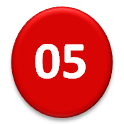In his latest book,
How to Fail at Almost Everything and Still Win Big, cartoonist Scott Adams
describes the ways he has found to to hack his wet computer, ie his brain, for
success, health and happiness. His advice is a bit spooky as it goes the grain
of established wisdom and because of, as he readily admits, the source.
However, its a fine book and the contents appear as they might work.
I bring that up as
excuse to mention Thinking as a Science by Henry Hazlitt. This one too, helps
one get hold of the resources of one's own mind but in an organized, rational
way. In a sense: hack it too. Somehow, this gem has fallen out of the attention
of the wider public, and deserves to be brought more to the forefront. The goal
of it is to bring method to the thinking process and this geared towards the
solution of practical problems.
Here's the table of
contents:
I The Neglect of
Thinking
II Thinking With
Method
III A Few Cautions
IV Concentration
V Prejudice and
Uncertainty
VI Debate and
Conversation
VII Thinking and
Reading
VIII Writing One's
Thoughts
IX Things Worth
Thinking About
X Thinking as an Art
XI Books on Thinking
Chapters 2 & 4
are the core of his system. Chapter 2 spells out the different thinking methods
one can unfurl at a given problem and how to thread them together. Chapter 4 is
of particular interest are his recommendations on concentration, which jibe
well with the views of William James, neuroplasticity and zen practice. By
itself, this one is worth its weight in gold.
Other chapters reinforce the method like nos. 3 and 5 while chapter 6 extends the method to include other
persons. This area has been explored and expanded by other authors
independently, so you might also want to check out other books devoted to it.
All throughout, but
on chapter 7 in particular, this book is surprisingly against reading. Drawing
heavily from Schopenhauer's essay On Thinking for Oneself, Hazlitt believes
that reading actually is an excuse for not using one's own mind and offers remedies. This part reminds me about Brottman's
Solitary Vice which also assails reading as an act but from a different angle.
Despite his apparent aversion, he obliges and shares his advice on tackling
texts. Another virtue of his advice on reading is that it is easier to apply
than others, such as Adler's of which we talked recently.
I admit it: I too usually shoot from the hip when faced
with problems, rather than taking a more rational stance as a Hazlitt proposes.
If you're anything like me, you are likely
to do likewise. Why shortchange ourselves, when there's help at arm's reach? As
I see it, there are two aspects to habitual use of thinking as a science: 1)
the acquaintance with the techniques, starting from actually being aware that
there are such; and, 2) getting into the
habit of using them when needed, which I feel is the most difficult part (more
on this related to chess on a previous post). Good ol' Harry Lorayne used to
stress this point. Hazlitt retakes it on the second to last chapter and
offers guidelines.
A further reading
section is included at the end (with commentary).
The book stands on
its own, but Hazlitt made a retrospective comment on it on a later book, The
Wisdom of Hazlitt, which rounds off his system. Here, a mellowed Hazlitt
relaxes his stance against reading and
gives further advice . The further reading section is now greatly expanded.
One of the best
books I've read over the last couple of years, because, if anything, challenges
ones viewpoints. Bring out pen and paper.











